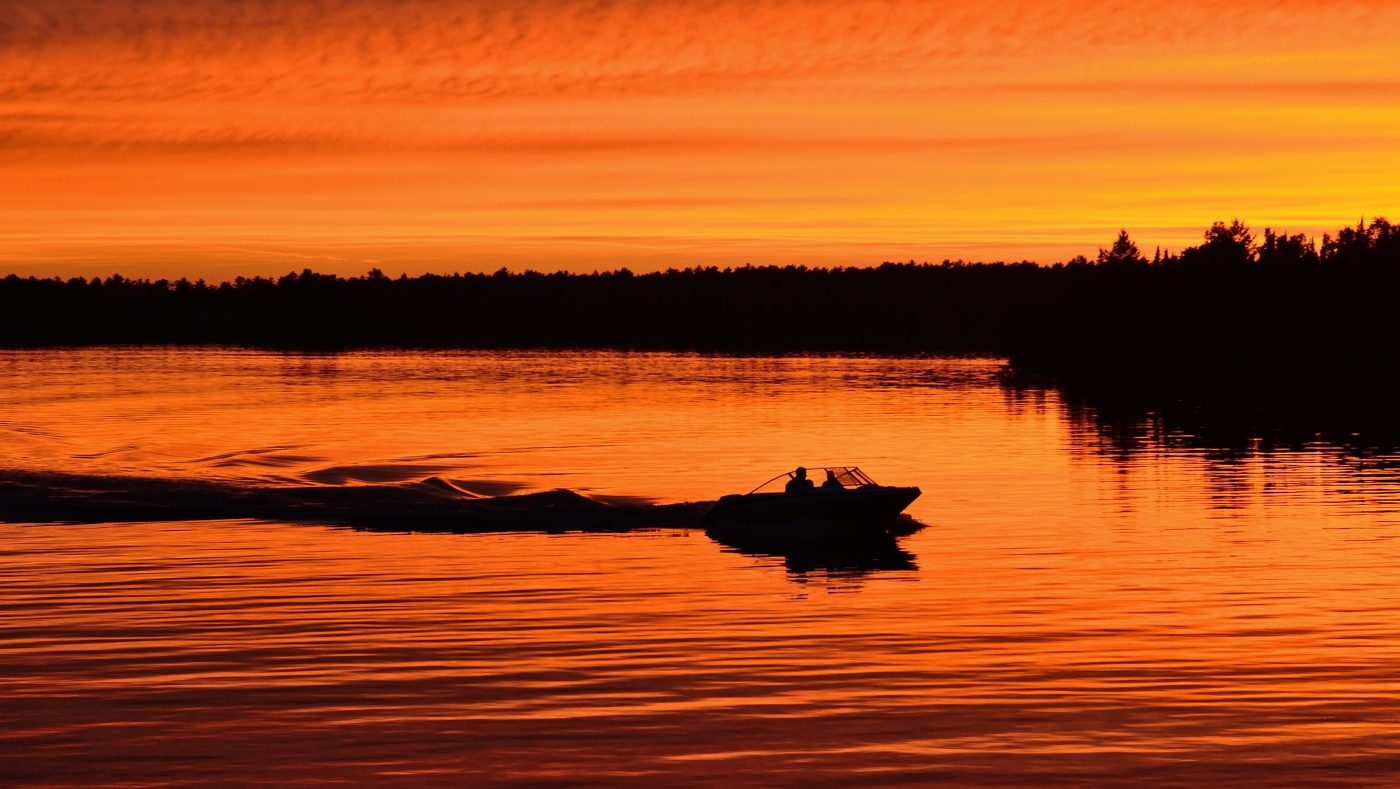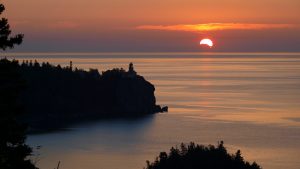
Minnesota lake ice-out starts month early
DULUTH — Anyone who spent the past few months in the Upper Midwest won’t be surprised to know that winter’s grip on Minnesota lakes is disappearing faster than Sasquatch when you pull out a camera.
The warmest meteorological winter since accurate records have been kept across Minnesota is leading to the earliest-ever ice-out dates for many of the state’s 10,000 or more lakes, and in most cases, it’s not even close.
Nearly all of the lakes in the southern half of the state have lost their ice at a record-early date so far this year, many a full month or more ahead of normal, according to data from the Minnesota State Climatology Office of the Minnesota Department of Natural Resources.
Clear Lake in Waseca County, with records dating back to 1874, lost its ice March 1 this year, smashing the old record set March 6, 1987, and more than a month ahead of the median ice-out date of April 3. Pickerel Lake in Aitkin County lost its ice March 9, more than a month before its average April 14 ice-out. Even Fish Lake near Duluth had ample open water at midweek, approaching ice-out.
For northern Minnesota, 2012 is the year to beat in many cases, the last time the Northland had a non-winter and saw most lakes lose their ice in March and April. Big Sandy Lake in Aitkin County lost its ice March 26, 2012, the earliest on record. Even the big, cold lakes bordering Ontario lost their ice in early April in 2012, and that appears to be what may happen this year.
The lack of snow on any Minnesota lake of late means an even faster ice-out. Snow insulates the ice and protects it from the sun, making ice last longer.
“So far, it’s been pretty consistently a month early as it (ice-out) progresses north. That may slow down some farther north, but probably not much,’’ said Pete Boulay, a climatologist with the Minnesota State Climatology Office.
While state climatologists don’t have nearly as many records for lake ice-in dates, the dates lakes freeze over, they have a few that may show this was the shortest winter ice period on record. Boulay says he’s watching Lake Bemidji which has both ice-in and ice-out dates going back to 1959. Until now the shortest period of ice cover was 85 days in 2012 and again in 2016. But because Lake Bemidji didn’t officially freeze until Jan. 6 this winter, Boulay is guessing the lake may break its record for shortest ice cover.
Having lakes ice-free a month early should be good for people anxious to open their cabins, put in their docks and start fishing, but it may not be great for the fish. The News Tribune earlier this month reported that recent research by Wisconsin scientists found that earlier and highly variable ice-out dates hurt walleye spawning success.
This will be one year when there’s no worrying if the ice will be out by the Minnesota fishing opener.
“Not only has it been very, but we didn’t have much ice to begin with,’’ said Don Schreiner, a fisheries researcher for Minnesota Sea Grant at the University of Minnesota Duluth.
The extra month of open water means lake water will likely warm up faster, spurring more weed growth and likely more algae blooms, Schreiner noted. He said lake ecosystems would get a jump-start from the extra month without ice and that fish, by the May 11 fishing opener, could be in places and moods they would normally be in early June.
“Daylight (length) is also a factor (in when fish spawn) so that should moderate the very early ice-out somewhat. But it’s going to make this an interesting summer,’’ Schreiner said. “If the temperature trend we’ve seen this winter continues, weeds and algae are probably going to be an issue.”
Many lakes and rivers are already very low due to virtually no winter runoff and ongoing drought conditions. Schreiner said the low and warmer water could be most troublesome for fish in North Shore streams, which tend to run off stored snowmelt and rainfall rather than from underground springs.
“We could see fish struggling to get up streams,’’ he said.
Did you know?
Greenwood Lake in Cook County is, on average, the last lake in Minnesota to lose its ice, with a median date of May 9. Still, it has happened as late as May 24 (2014) and as early as April 10 (2012). The latest ice-out on record in Minnesota is for Gunflint Lake, on the Ontario border, which didn’t lose its ice until June 3 in 1936.
Definition of lake ice-out
The definition of lake ice out can vary from lake to lake. In most cases for the citizen observers reporting data to the Minnesota State Climatology Office, ice out occurs when the lake is completely free of ice. But for some lakes, it may be when it is possible to navigate from point A to point B. Either way, observers on each lake use consistent criteria from year to year when reporting lake ice-out dates. To check your favorite lake, go to dnr.state.mn.us/ice_out/index.html.
Find estimated ice-out date for your lake
The Duluth News Tribune wrote last year about Minnesota Sea Grant’s new Ice Out Widget. This year Sea Grant has renamed it the Minnesota Ice-Out Clock and updated some features to make it easier to use. You simply click on the weather station nearest your lake, fill in a little information and the program spits out an estimate for ice-out. Go to seagrant.umn.edu/programs/recreation-and-water-safety-program/mn-ice-out-clock.
Related Articles
Illegal drone flight grounds helicopter fighting wildfire at Split Rock Lighthouse State Park
Owner of Willmar massage business charged with forcing woman into prostitution
Girls state basketball roundup: Goodhue, Mountain Iron-Buhl advance to set up Class A title bout
Minnesota boys state tournament is a pageant of hockey hair
DNR tightens open water fishing regulations for Upper Red Lake

